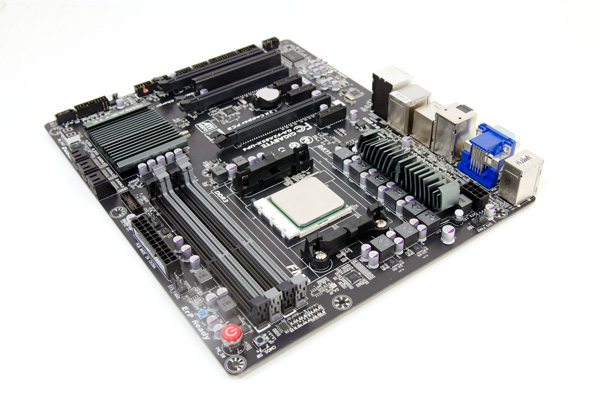AMD A10-5800K & A8-5600K Review: Trinity on the Desktop, Part 1
by Anand Lal Shimpi on September 27, 2012 12:00 AM ESTFinal Words
On average, Trinity's high-end 384-core GPU manages to be around 16% faster than the fastest Llano GPU, while consuming around 7% more power when active. Given that Trinity is built on the same process node at Llano, I'd call that a relatively good step forward for AMD's equivalent of a "tick". From AMD's perspective, the fact that it can continue to deliver a tangible GPU performance advantage over Intel's latest and greatest even with its die harvested APU (256-core Trinity) is good news. For anyone looking to build a good entry level gaming PC, the Trinity platform easily delivers the best processor graphics performance on the market today. If you're able to spend an extra $100 on a discrete GPU you'll get better performance, but below that Trinity rules. The trick, as always, will be selling the GPU performance advantage alongside the presumably lower x86 CPU performance. We'll have to wait another week to find out the full story on that of course, but if you're mostly concerned about GPU gaming performance, Trinity delivers.
Ivy Bridge was a good step forward for Intel, the problem is that only the high-end Ivy Bridge graphics configuration borders on acceptable. The HD 2500's performance is really bad unfortunately. It's easy to appreciate how far Intel has come when we look at improvements from one generation to the next, but when you start running benchmarks on Trinity it really compresses the progress Intel has made. When Haswell shows up it may be a different game entirely, but until then if you're interested in a platform with processor graphics (with an emphasis on the graphics part), Trinity is as good as it gets.











139 Comments
View All Comments
deontologist - Thursday, September 27, 2012 - link
Anand - always 3 months late to the party.Devo2007 - Thursday, September 27, 2012 - link
What are you talking about? AMD is just now lifting the NDA on the Trinity A10-5800K & A8-5600K desktop CPUs (and even then, sites can only talk about GPU performance).If any site had reviewed a Trinity APU several months ago, it was the mobile version (A10-4600M). Anandtech even reviewed it here:
http://www.anandtech.com/show/5831/amd-trinity-rev...
karasaj - Thursday, September 27, 2012 - link
I believe he was referring to this:http://www.tomshardware.com/reviews/a10-5800k-a8-5...
Samus - Thursday, September 27, 2012 - link
None of those numbers compare Trinity to the competition. They're mostly worthless.Samus - Thursday, September 27, 2012 - link
Engadget has word the A10 is aiming at i3 prices and i5 performance on the CPU side. We've already seen A8 and A10 cream the i3 and i5 in GPU. I'm excited. I haven't built an AMD system in years, and the A8 65w might be a perfect HTPC CPU.jwcalla - Thursday, September 27, 2012 - link
Tom's has benchmarks against a Core i3-2100 if you'd like to see how it stacks up.Samus - Thursday, September 27, 2012 - link
i can't find any of tom's benchmarks showing a comparison of THESE chips against any Intel chips. They all compare the A10 and A8 to eachother.GazP172 - Thursday, September 27, 2012 - link
If its anything like the Lano, the top end 65w's will basically only be released to the OEM's. Which to me are the only ones worth having.Taft12 - Thursday, September 27, 2012 - link
That was because of AMD's lousy yields and contracts which prioritized access of the supply to the likes of HP and Acer over the retail channel.OEMs still have first dibs, but yield issues are apparently better now. I have high hopes for the 65W parts (which includes actually being able to buy them on Newegg!) The A10-5700 could be the best of all worlds.
mikato - Monday, October 1, 2012 - link
Agree! I want to A10-5700 probably. No brainer.